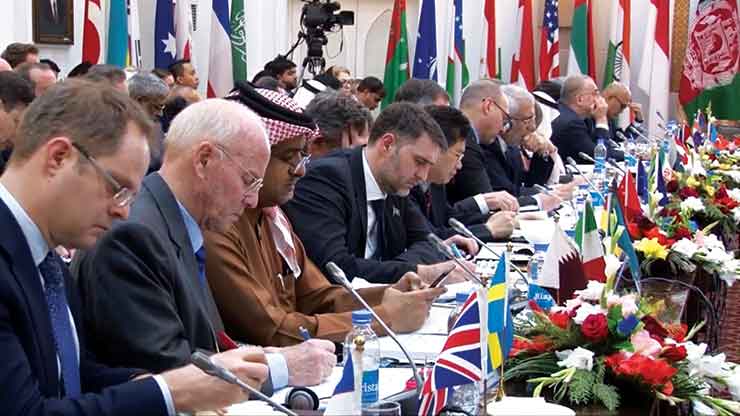
Washington: The Pentagon has started planning to have zero US troops in Afghanistan by spring, though orders have not yet been issued for a full withdrawal, a Department of Defense official said on September 21.
“I’d like to make it clear that [Defence Secretary Mark Esper] has not issued orders to reduce military personnel below this 4,000 to 5,000 level in Afghanistan, although we are conducting prudent planning to withdraw to zero service members by May 2021 if conditions warrant, as per the US-Taliban agreement,” David Helvey, the official performing the duties of Assistant Secretary of Defense for Indo-Pacific security affairs, told the House Oversight and Reform Subcommittee on National Security at a hearing.
The comments come as President Trump has been touting US troop drawdowns in the region in the final stretch of the campaign as evidence he is delivering on his promise to end America’s “endless wars.”
Officials have said they expect to be at about 4,500 troops in Afghanistan by November.
The comments also come as the Taliban and Afghan government have started peace talks in Doha, Qatar, aimed at ending the 19-year war.
But the two sides remain far apart on issues as basic as a cease-fire and women’s rights. And even as they sit down to talk, violence in Afghanistan rages, with September 21 reportedly the bloodiest day of fighting since negotiations began a week ago.
The intra-Afghan talks were called for in the agreement the Trump administration signed with the Taliban in February.
The agreement also laid out a timeline for a full US withdrawal from Afghanistan by May 2021. In exchange, the Taliban agreed to deny safe haven to al-Qaeda and other terrorist groups to attack the West.
Even as planning has begun for a full withdrawal, US military officials have said the Taliban has not met its counter-terrorism commitments.
“The Taliban has still not shown conclusively that they’re going to break with al-Qaeda,” Gen Frank McKenzie, the commander of US Central Command, said earlier this month. “So there are still some things out there that concern me about the Taliban’s either ability or willingness to comply with all the terms of the deal.”
On September 22, Zalmay Khalilzad, the administration’s envoy for Afghan peace talks, said the Taliban has taken “positive steps” toward breaking with al Qaeda, though he said the Taliban has more work to do and would not answer a question in an unclassified setting on whether Taliban leaders have instructed their fighters to break from the terrorist group.
“We look for more steps before we are satisfied, and I believe that once we reach 4,500, we’d do an evaluation of ties and actions that they have taken and make decisions based on that,” Khalilzad said at the hearing.
The US withdrawal is contingent on the counter-terrorism commitment, not the outcome of intra-Afghan talks or the Taliban reducing attacks on Afghan forces.
But Khalilzad said that “by any measure, current levels of violence are too high,” adding that “we know that reductions are possible.”
US lawmakers have been critical of the deal with the Taliban, warning the insurgents cannot be trusted and expressing concerns the drawdown is based more on Trump’s political calendar than national security needs.









